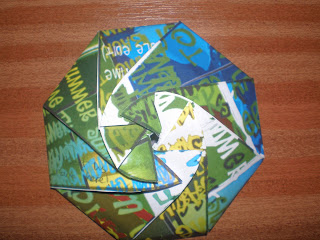For this project, I had to create a CD packaging, surface designs and a logo for an existing artist and song. To come up with some ideas, I created a mind map of my favourite songs and artists. I finally chose to go with 'Summertime' by Will Smith because it had a summer theme to it, but at the time, my decision wasn't definite.
Next, was the creative process, which involved various experiments of techniques that are commonly used on CD covers, including screen printing, stencil work, typography posters, vector images, which were created either by hand, Illustrator or Photoshop. Later on, I used other techniques which were mostly created by hand, like drawing the artist and taking photos of objects that were mentioned in the lyrics, sketching these objects.
After this, I was finally sure that I was going to go along with 'Summertime', so I began to create various logos that I could use throughout the project. I used many mediums, such as pastels, charcoal, Indian ink and paint even on Photoshop. I finally chose to work with this
logo, because the letters were of different sizes, and this was typical of at the time the record was made. The colours were bold and this goes well with the summer theme. Next, on to the packaging. I began creating a
moodboard, of surface designs, other existing packages, the lyrics and my final logo to be included on the packaging. This lead to experiments of potential packaging using different materials, including recycled packaging, fabric, magazine pages, envelopes etc. This lead to bookbinding experiments, for the little booklet that is usually included inside of a CD package, so I tried out stapling and sewing, and then onto the surface artwork, which was mostly techniques used in Photoshop, including the grunge texture, the personal wallpaper and the seamless repeating pattern. From this point on, the focus of the project was to narrow it down to doing experiments relevant to my own individual project. This would later help me in my own self driven experiments- experiments which I thought are relevant to my chosen song such as my bold repeated patterns created on
COLOURLovers.com, vector images created from my own photographs etc. On to the packaging, I started to create some
protoypes which could potentially be used in my final outcome, and I eventually chose the '
Wowspiral' originally created by the company 'Wewow'. I thought this packaging was clever and economical, especially as only one piece of card was needed, and the circular clasp made when closed looked quite nice. And my final surface design for the CD package was a combination of vector images of
Will Smith, a pair of sunglasses and a pair of Converse trainers as aspects mentioned in the lyrics, and the use of the typographic defined brush, all created in Photoshop. But, I came to realise that I had to create another surface design to go on the inside of the packaging, so I created on using the same program, but instead i used the Gradient tool, using bold colours such as green, yellow and orange, as well as the tracklisting. If I had used the same design for the exterior, then the customer would be too overwhelmed with the design. Next, I would need to create the same packaging for the inlay, which I decided was going to be lyrics for the song, that the customer could sing along to. So, I created an
exterior and interior surface design using the repeated patterns from COLOURLovers.com, and the Gradient tool from Photoshop. My main influence for this was from
Gillian Blease's repeated pattern, which had the bold and vibrant colours, as well as geometric patterns that would have been popular during the 90s. I thought it would've been a good idea to have two different surface patterns for the two packages so that anyone could tell the difference.
Overall, I thought that the project was success, because I knew exactly what I was doing and how I was going to assemble the whole package. When I tried assembling the Wowspiral for the first time, it didn't come together the way that I wanted it to, but after practising it for a while, it managed to assemble it successfully, especially with the circular clasp. However, as with anything, there are some things I could have added to make it better. One of them being that I could have a different colour on the CD package exterior instead of using black. Also, the circular clasp on the CD package didn't work out as well as I had wanted it to, the inlay package turned out to be a bit better.
I found the project generally pleasant. I quite like packaging so it was fairly easy to come up with ideas and create. The project did show me some new techniques, especially when it came to surface artwork designs, one of them being the opportunity to make your own patterns at COLOURLovers.com, the grunge texture experiment, and the vector images experiments. As I mentioned before, I like creating packaging, so I wouldn't mind doing a similar project again for the next PERSONAL PROJECT.
















































